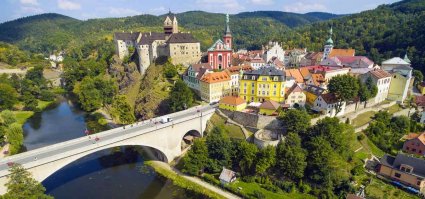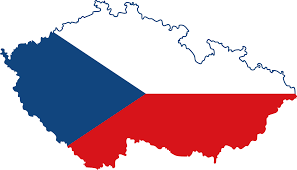Czech Republic
The Czech Republic is not a geographically large country, but it has a rich and eventful history. From time immemorial, Czechs, Germans, Jews and Slovaks, as well as Italian stonemasons and stucco workers, French tradesmen and deserters from Napoleon’s army, have all lived and worked here, all influencing one another. For centuries they jointly cultivated their land, creating works that still command respect and admiration today.
It is thanks to their inventiveness and skill that this small country is graced with hundreds of ancient castles, monasteries and stately mansions, and even entire towns that give the impression of being comprehensive artifacts. The Czech Republic contains a vast amount of architectural treasure, as well as beautiful forests and mountains to match.
The country's official language is Czech, a Slavic tongue spoken by over 10 million. The Slovak language can also frequently be heard, especially in larger Czech cities, as there is a sizable Slovak minority within the republic, and both languages are mostly mutually intelligible to each other. Czechs are proud of their language, and thus, even in Prague, you will not find many signs written in English outside of the main tourist areas. Many older people, especially outside the larger cities, are unable to converse in English, so it's good to learn some Czech words or phrases before your arrival. However, most young people speak at least some English, as it has been taught in schools since 1990.
Many Czechs speak a second and often a third language. English is the most widely known, especially among younger people. German is arguably the second most widely spoken language among older people. Russian was taught extensively under communist rule, meaning most people born before 1975 speak, read, or understand at least some Russian (and often pretty well). However, the connection with the communist era and the Soviet-led invasion of 1968 (as well as with contemporary Russian mafia gangs) have given the language some negative connotations. Russian is also not very useful with younger people, as it is not, despite the common misconception, mutually intelligible with Czech beyond some similar words and phrases. Other languages, like French and Spanish, are also taught in some schools, yet you should not count on them being widely understood. Czechs also understand basic words or simple sentences in other related Slavic languages, including Polish, Ukrainian, Serbo-Croatian, and Slovenian.
From WikiTravel.org


Education in the Czech Republic
Education in the Czech Republic is free and compulsory from ages 6 to 15. In 1996, the gross primary enrollment rate was 104 percent, and in 1995, the net primary enrollment rate was 86.9 percent. Primary school attendance rates were unavailable for the Czech Republic as of 2001. While enrollment rates indicate a level of commitment to education, they do not always reflect children’s participation in school. Many ethnic Roma children attend school less regularly and attend “special schools” for mentally disabled or socially maladjusted individuals.
While the public school system is free and does not create significant financial barriers for children to attend, the private schools, particularly in Prague, are largely financially inaccessible for the majority of local population and thus also represent an element of exclusion, educating children separately from the rest of their peers.
The Czech school system has four degrees:
Preschools - (from 2 to 5 years old)
Primary (elementary) - (from 6 to 15 years old, mandatory)
Professional secondary (high) schools, grammar schools (gymnasium), vocational schools and courses
Universities
Study Possibilities in the Czech Republic
















